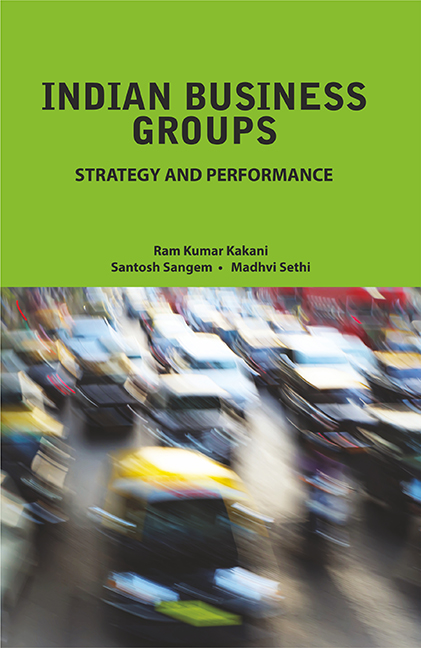Book contents
- Frontmatter
- Contents
- List of Tables and Figures
- Preface
- Acknowledgements
- 1 Introduction to Business Groups and their Strategies
- 2 Business Groups across the Globe
- 3 Product Diversification and Performance: Measurement and Historical Relationship
- 4 Conceptual Framework and Research Methodology
- 5 Empirical Results and Managerial Implications
- 6 Case Analyses of Business Groups' Strategies
- 7 Summary of the Work
- References
- Index
- About the Authors
1 - Introduction to Business Groups and their Strategies
Published online by Cambridge University Press: 13 July 2022
- Frontmatter
- Contents
- List of Tables and Figures
- Preface
- Acknowledgements
- 1 Introduction to Business Groups and their Strategies
- 2 Business Groups across the Globe
- 3 Product Diversification and Performance: Measurement and Historical Relationship
- 4 Conceptual Framework and Research Methodology
- 5 Empirical Results and Managerial Implications
- 6 Case Analyses of Business Groups' Strategies
- 7 Summary of the Work
- References
- Index
- About the Authors
Summary
Strategic management is the process through which managers ensure the longterm adaptation of their organization to their environment (Chakravarthy, 1986). Corporate strategy is the conduct by a business organization of the composition of its cluster of tangible and intangible assets. Of the various corporate strategies that firms follow, diversification arguably ranks as among the most important. Diversification is a movement by an organization (either a firm or business group) into a wider field of products/services/activities/geographies to reach out to a larger body of customers. Product diversification has a broad spectrum ranging from limited endeavors into closely related activities at one extreme, to engagement in completely unrelated activities at the other extreme (Ansoff, 1971).
Diversification and business groups
Business groups are a group of firms often initiated by family/trust and bound together by equity cross-ownership and common board membership.
Business groups are formally independent firms that are interconnected on account of single common administrative and financial control, owned and controlled by either families or trusts or foundations. These business networks are usually owned through investment firms with cross-holdings among affiliates. Industrial activity in most countries of the world continues to be dominated by these business houses. They often diversify across different product lines with many divisions under them, similar to U.S. conglomerates such as General Electric Co. popularly known as GE. The Dangote Group from Africa, started by Aliko Dangote, is another illustration of a conglomerate with diverse interests ranging from trading commodities to manufacturing cement. In India, for instance, the A. V. Thomas group controls a host of firms predominantly in the businesses of plantations and consumer products, whereas the Tata group firms controlled by the House of Tatas operate in diverse product portfolio encompassing steel to software to salt.
Business houses may exhibit insignificant individual differences yet differ in systematic ways when aggregated according to suitable criteria. A business group's long-term performance would primarily be an outcome of its overall strategy, a critical element of which is the business group diversification strategy. It comprises decisions to efficiently utilize, add, retain or divest the group's existing portfolio of resources (or assets). Some of the main issues faced by a business group's strategists are: (a) choice of product and service portfolio to create economic value and (b) the mode and timing of additions and divestments in resources (or assets).
Information
- Type
- Chapter
- Information
- Indian Business Groups: Strategy and Performance , pp. 1 - 27Publisher: Foundation BooksPrint publication year: 2015
